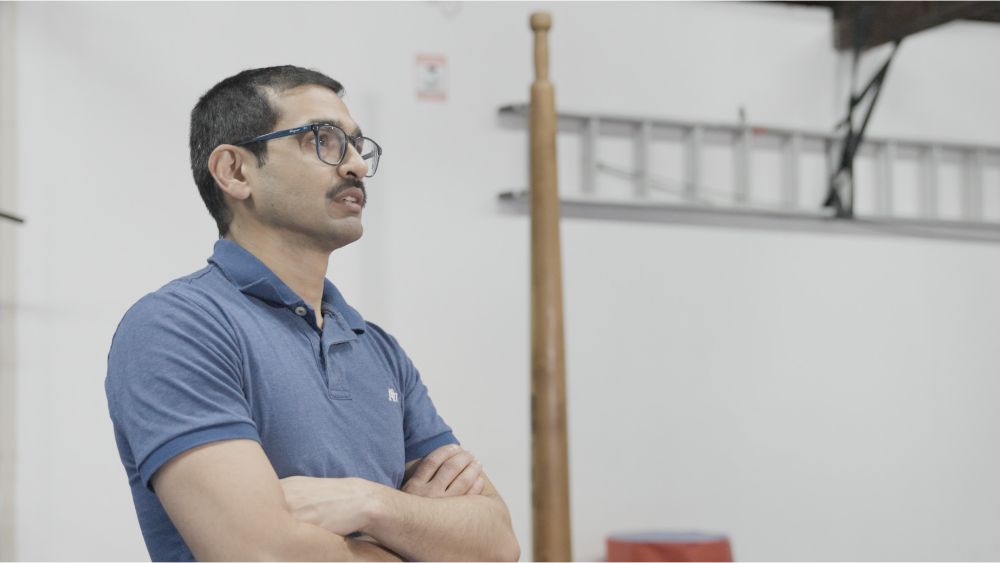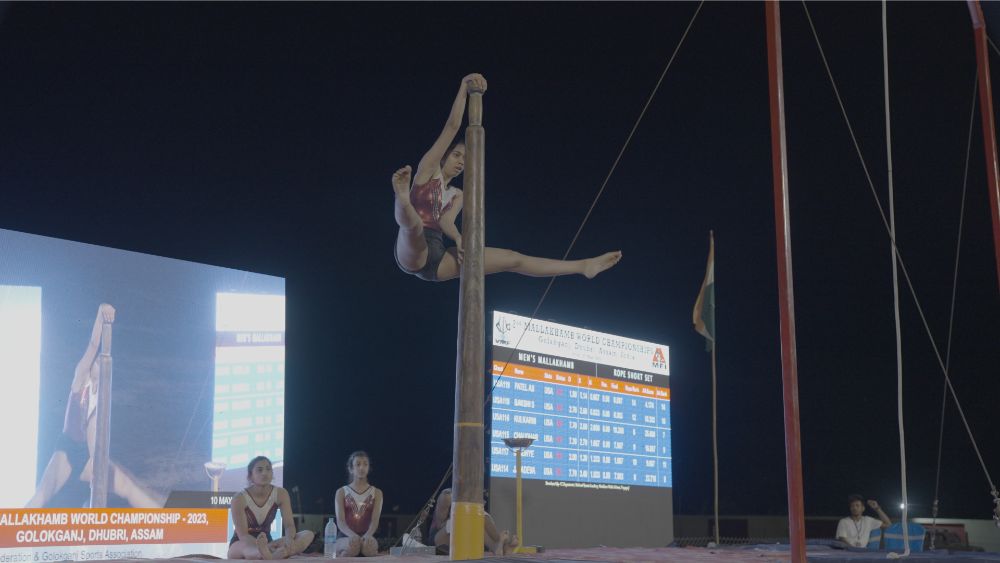Mallakhamb, a fascinating and ancient Indian sport that combines elements of gymnastics, yoga, and acrobatics, has gained popularity in recent years. If you’re a beginner looking to explore this unique and dynamic discipline, you’ve come to the right place.
In this comprehensive guide, we’ll dive deeper into the world of Mallakhamb, providing you with insights into its history, the equipment involved, basic techniques, and tips to help you embark on your Mallakhamb journey.
Understanding the Roots of Mallakhamb
Before starting into the practical aspects of Mallakhamb, it’s essential to understand its rich history and cultural significance. This ancient Indian sport has a compelling story that dates back centuries.
Mallakhamb, a term derived from the Marathi words “Malla” (wrestler) and “Khamb” (pole), was initially a training regimen for wrestlers in the 12th century. Wrestlers used Mallakhamb to enhance their strength, flexibility, and balance, all essential qualities for success in their sport.
Mallakhamb Equipment: The Basics
Before you start practicing Mallakhamb, it’s crucial to acquaint yourself with the necessary equipment. The central piece of equipment is the Mallakhamb pole, but there are various forms and styles of Mallakhamb, each with its unique characteristics.
At the core of Mallakhamb is the vertical wooden pole, varying in height to cater to different levels of expertise. Traditional Mallakhamb poles are made from polished teak wood, ensuring a smooth surface that facilitates a secure grip. However, modern variants can also be constructed from stainless steel or fiber-reinforced plastic for durability and safety.
Different Styles of Mallakhamb
Mallakhamb comes in several forms, and as a beginner, it’s essential to choose the style that suits your interests and abilities. Some popular styles include:
Pole Mallakhamb:
This classic form involves performing various exercises and poses on the pole, emphasizing balance, strength, and flexibility.
Rope Mallakhamb:
In this style, the athlete uses a thick rope attached to the pole for support while executing complex moves.
Hanging Mallakhamb:
Athletes perform on a horizontal bar suspended from the ceiling, focusing on strength and body control.
Rope & Pole Mallakhamb:
A combination of pole and rope Mallakhamb, this style challenges practitioners with a broader range of exercises.
Mallakhamb for Beginners: Basic Techniques and Safety Precautions
As a beginner, you should start with the fundamental techniques and safety precautions to ensure a safe and effective Mallakhamb practice.
Warm-Up and Stretching
Begin each Mallakhamb session with a thorough warm-up. Focus on stretching exercises to prepare your muscles for the intense workout ahead. Warming up and stretching help prevent injuries and increase your flexibility.
Grip and Posture
A proper grip on the Mallakhamb pole is crucial. Ensure that your hands are clean and free from sweat, and use a firm but not overly tight grip. Maintain good posture while on the pole, keeping your back straight and your core engaged.
Balance and Control
Mallakhamb requires precise balance and control. As a beginner, start with simple poses and exercises to develop these skills. Concentrate on maintaining your balance and avoiding sudden movements that could lead to falls or injuries.
Gradual Progression
Progress in Mallakhamb should be gradual. Start with basic poses and exercises, and as you gain confidence and strength, move on to more advanced techniques. Rushing into complex moves can lead to frustration and injury.
Safety First
Safety is paramount in Mallakhamb. Always have a spotter or coach present when practicing, especially as a beginner. They can provide guidance, support, and ensure your safety during your training sessions.
Finding a Mallakhamb Coach or School
To make substantial progress in Mallakhamb, it’s advisable to seek guidance from an experienced coach or join a reputable Mallakhamb school. These mentors can provide personalized instruction, help you refine your techniques, and offer valuable feedback.
The Role of a Mallakhamb Coach
A Mallakhamb coach can offer expert guidance, tailored training programs, and safety supervision. They can help you identify your strengths and weaknesses, allowing you to focus on areas that need improvement.
Choosing a Mallakhamb School
When selecting a Mallakhamb school, consider factors such as the school’s reputation, the experience of the instructors, class size, and facilities. Look for reviews and testimonials from other students to get an idea of the school’s quality and commitment to Mallakhamb training.
Developing a Training Routine
Consistency is key to success in Mallakhamb. To make steady progress, establish a training routine that suits your schedule and goals. This routine should encompass warm-up exercises, specific Mallakhamb techniques, and cool-down stretches.
Setting Realistic Goals
Define your Mallakhamb goals, whether it’s mastering a particular pose, improving your balance, or increasing your strength. Setting clear and achievable objectives will keep you motivated and focused.
Monitoring Progress
Keep a training journal to track your progress. Note down the exercises you’ve learned, the duration of your practice sessions, and any improvements you’ve noticed. Regularly reviewing your progress can boost your confidence and drive.
Tips for Mallakhamb Success
As you embark on your Mallakhamb journey, consider these additional tips to enhance your experience and ensure your success:
Patience and Perseverance
Mallakhamb can be challenging, and progress may not always be linear. Stay patient and persistent, as mastering this art takes time and dedication.
Balanced Nutrition
Maintain a balanced diet to support your Mallakhamb practice. Proper nutrition provides the energy and nutrients your body needs to perform at its best.
Hydration
Stay well-hydrated during your practice sessions to prevent fatigue and muscle cramps. Adequate water intake is crucial for your overall well-being.
Rest and Recovery
Allow your body to rest and recover between training sessions. Overtraining can lead to injuries and hinder your progress.
Celebrate Small Wins
Acknowledge and celebrate your achievements, no matter how small they may seem. Every step forward is a victory in your Mallakhamb journey.
Conclusion
Mallakhamb offers a unique and engaging pathway to physical fitness, mental resilience, and cultural enrichment. As a beginner, immersing yourself in this art form can be both challenging and immensely rewarding.
By understanding its history, mastering the basics, and seeking proper guidance, you can unlock the countless benefits Mallakhamb has to offer. So, prepare to step onto the Mallakhamb pole, where history, culture, and personal growth converge in a thrilling journey of self-discovery and physical excellence.


